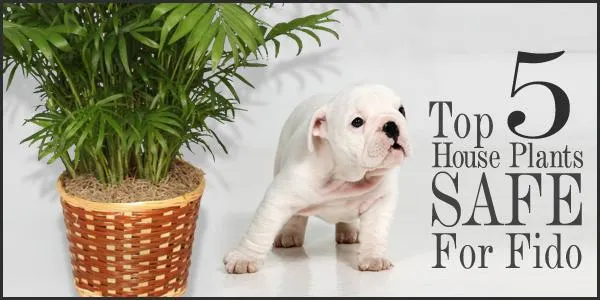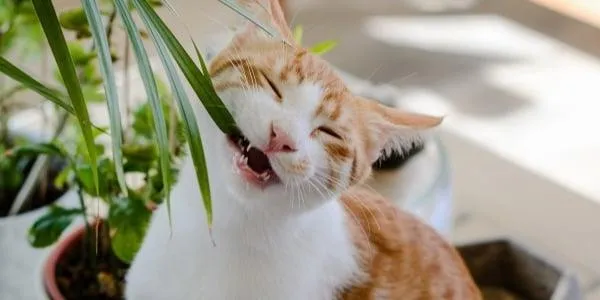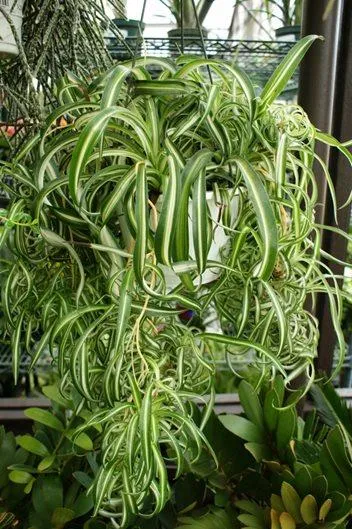The Best Houseplants for Pet Owners
If you share your home with furry friends like dogs or cats, you know the challenges of pet-proofing your space. Pets can be curious and may chew or nibble on unfamiliar objects. As a pet owner, you want to make sure anything within reach is safe. Fortunately, houseplants can add visual appeal to your interior décor while also being pet-friendly. Here are some of the top non-toxic plants suitable for homes with pets.
Snake Plant (Sansevieria trifasciata)
- One of the hardiest and most pet-safe plants is the snake plant. From my experience as an avid plant collector, snake plants are nearly impossible to kill.
- Their stiff, sword-like leaves are too tough for pets to enjoy chewing. At the same time, they’re aesthetically pleasing and come in various heights.
- Snake plants release oxygen and remove toxins from the air, so they help purify your indoor environment. They also tolerate low-light conditions, making them ideal for locations away from windows.
While seemingly indestructible, snake plants do have one vulnerability – their pups. New snake plant shoots emerging from the parent plant crown can be tempting for pets to nibble. So when repotting, be careful not to leave stray pups where curious pets may find them. Otherwise, snake plants are about as foolproof as houseplants get for pet owners.
Chinese Evergreen (Aglaonema commutatum)
Chinese evergreens come in a variety of colorful leaf patterns like burgundy, cream variegation, or dark pink splotches. I have kept Chinese evergreens for over five years now in multiple homes and they have proven very robust with just occasional watering. Their waxy leaves may interest cats or dogs briefly but are not easily munched on. Plus, Chinese evergreens tolerate low-light conditions well. Just be sure to place them where they’ll receive indirect sunlight rather than full sun, which can scorch their attractive foliage.
Peace Lily (Spathiphyllum)
Peace lilies have striking white blooms that emerge periodically and look lovely grouped on a table or standing alone. From my experiences cleaning up after furry friends, peace lilies are not a top chew toy for pets. While their leaves may draw some initial interest, peace lilies contain calcium oxalate crystals that can cause tongue numbness or irritation if eaten in large quantities. This natural deterrent keeps pets from making a regular meal out of them. Just like human houseguests, peace lilies also indicate when they need water by drooping their leaves – then they perk right back up after a thorough drink.

Pothos or Devil’s Ivy (Epipremnum aureum)
With its heart-shaped green or variegated leaves, pothos is one of the low-maintenance plants you’ll commonly find in offices and homes. Pothos vines grow quickly and their leaves make an attractive surface for trailing along shelves, hanging pots, or trailing out of baskets. While the trailing vines may tempt cats to bat or chew, pothos contains no toxins that would harm pets if ingested in small amounts. Just keep the soil and leaves away from food prep areas. Pothos are easy to propagate, so you can start new plants from cuttings to share with friends or fill out your own collection.
Spider Plant (Chlorophytum comosum)
Spider plants are eye-catching with their long, strappy leaves and decorative plantlets that form on short stems elevated above the foliage. These plantlets are ready to remove and plant themselves to create new spider plants. Spider plants purify indoor air and tolerate low-light conditions well. From my experience over a decade of plant parenting, spider plant leaves and plantlets hold little interest for cats or dogs as potential chew toys. And their more succulent texture doesn’t make them ideal for destroying either. Spider plants are fairly carefree members of the houseplant family.
ZZ Plant (Zamioculcas zamiifolia)
No-fuss ZZ plants consist of thick stems with dark green, glossy leaves that seem to go forever without a drink. I was stunned the first time I received a ZZ plant as a gift and realized it only needed water every few months! ZZ plants are practically indestructible and contain no toxins to pets either. Their waxy, sturdy leaves aren’t enticing for nibbling. ZZ plants are super low maintenance and can go long stretches when you’re away on vacation without missing a watering. They tolerate low light and a wide variety of home conditions. Definitely one of the hardiest and safest plants for pet parents.
English Ivy (Hedera helix)
With its cascading vines and deep green leaves, English ivy prefers clinging or trailing and makes an excellent hanging basket or tabletop plant. English ivy is non-toxic, though the leaves and stems could potentially cause minor digestive upset if consumed in large amounts by dogs or cats. However, from my experience owning ivy for years with cats around, the small leaves and tough texture aren’t a favorite for chewing toys. English ivy thrives in lower light and does well in east, west or north-facing windows. It’s an attractive accent for any room that won’t pose a serious danger even if nibbled.

In general, I’ve found that pet owners should avoid bulbs, berries, seeds, or plants that resemble grass, as these features tempt both cats and dogs to nibble or eat. Stick with sturdy-leaved, low-interest plants you’ve seen safely withstand curious pets. No plant is 100% pet-proof, so observe any new additions for signs of interest until you know your pet will leave it alone. Hopefully these top non-toxic picks give you safe aesthetically pleasing options to accent your home décor. Let me know if you need any other plant recommendations for balancing indoor greenery and furry companions!
Top 10 Best Houseplants Safe for Pets
| Plant | Pet Safety | Care Needs |
|---|---|---|
| Pothos | Non-toxic to cats and dogs | Low watering needs, tolerant of low light |
| Snake plant | Non-toxic to cats and dogs | Very low watering needs, thrives in low light |
| Peace lily | Non-toxic to cats and dogs | Moderate watering, enjoys medium to bright light |
| Chinese evergreen | Non-toxic to cats and dogs | Moderate watering, thrives in low to medium light |
| Spider plant | Non-toxic to cats and dogs | Low watering needs, tolerates low to bright light |
| Zanzibar gem | Non-toxic to cats and dogs | Low watering, thrives in low to bright light |
FAQ
-
What kinds of houseplants are generally okay for pets?
Most houseplants are safe if you basically keep them up high or blocked off, so pets can’t chew on them. A lot of common plants like peace lilies, spider plants, aloe, and palms are fine.
-
Are any plants poisonous to dogs or cats?
Indeed there are plants that can harm pets if eaten. Lilacs, azaleas, and sago palms release toxins that can really sicken animals. Pets may also have bad reactions to poinsettias, lilies, and tulips. It’s best to sort of steer clear of toxic plants altogether if possible.

-
What should I do if my pet eats a poisonous plant?
Don’t panic! Call your vet right away and try to determine how much they ate. They may need to induce vomiting or get treatment. Bring a sample of the plant with you too so the vet knows what it is. It’s always wise to have the vet’s phone number handy just in case.
-
Can pet hair and dander hurt my plants?
It’s possible but probably not too likely. Unless you have an unusually hairy dog or cat, most houseplants can handle a normal amount of shedding. At the same time, really long-haired pets left unattended around plants may possibly damage them over time. But it usually takes a lot. So most moderate pet owners have nothing to worry about.
-
Will my plants make my pet sick?
As far as we know, houseplants themselves are not toxic to pets. However, some pets may chew or eat plants anyway due to natural curiosity. The real concern is not the plant itself but any fertilizers, potting soil, or other additives you use. So it’s smart to keep questionable substances up high or locked away.UPDATE: New research shows some flowering plants like lilies and certain bulb varieties can absolutely sicken pets if ingested. So check plant toxicity lists!
What can I grow that’s safe for both me and my pets?
Lots of common, pet-safe houseplants also tend to be non-toxic for humans. Peace lilies, snake plants, pothos, philodendrons, spider plants and English ivy are wonderful options. You might also try heartleaf philodendron or bamboo palm. Is english ivy really safe for cats? Some experts say not definitively. Always better to confirm with your vet!

Is it okay to use fertilizer on houseplants if I have pets?
Many liquid or water-soluble fertilizers are low risk, since pets won’t often chew wet soil. Nevertheless, it’s always smarter to fertilize carefully and keep tubes or bags stored up high or put away entirely. Perhaps rinse plant leaves afterwards too if furry friends like to sniff. You never know – animals are hilarious yet sometimes getting into mischief appears inevitable. Let’s just try and outsmart them for their own safety!
